Disclosure: We may earn commissions if you purchase products after clicking on a link from our site.
Do you want to get better at tracking and scouting deer? Would you like to enhance your deer tracking and scouting skills? You will be a more skillful hunter when your deer tracking and scouting skills are enhanced.
Track and scout mature bucks effectively by understanding deer behavior and movement patterns. In this article, we discuss how to track and scout deer by improving your skills as well as using technology.
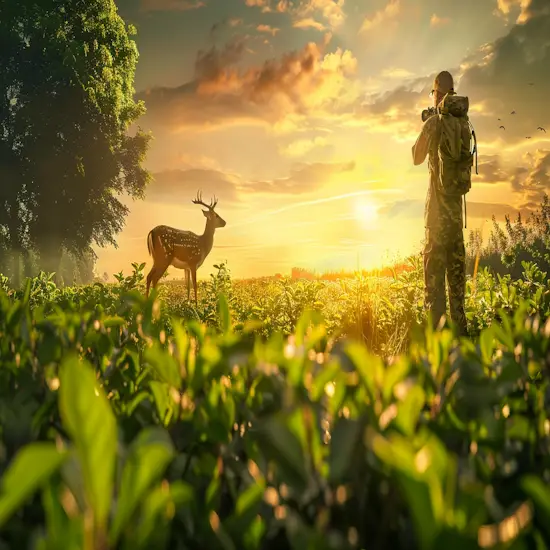
Table of Contents
- 1 Key Takeaways
- 2 Utilizing Technology for Deer Tracking
- 3 Traditional Tracking Methods
- 4 Identifying Deer Presence and Activity
- 5 Enhancing Hunting Success With Onx Hunt
- 6 Post-Shot Tracking and Recovery
- 7 Deer Movement Patterns
- 8 Tracking Deer With Trail Cameras
- 9 Tracking Deer in Snow
- 10 Tracking Deer Behavior With Onx Hunt
- 11 Tracking Peak Deer Activity
- 12 The Bottom Line
Key Takeaways
- Use trail cameras for 24/7 monitoring of deer activity.
- Analyze behavior patterns to identify feeding times and preferred routes.
- Utilize snow tracking to reveal fresh deer tracks and predict movement.
- Employ onX Hunt for efficient documentation of deer habits and patterns.
- Recognize the significance of traditional tracking methods like interpreting deer tracks and scat.
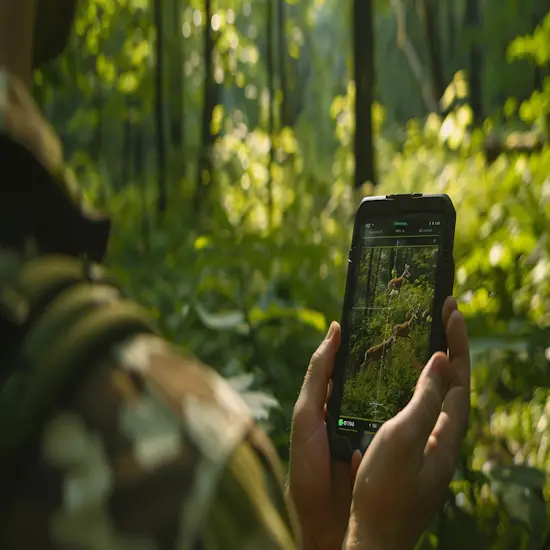
Utilizing Technology for Deer Tracking
Thanks to technology, you can enhance your deer tracking with trail cameras. Trail cameras have become an indispensable device for deer hunters. It allows them to set up trail cameras in different directions to capture footage of deer movements, habits, patterns, and behavior 24 hours a day, seven days a week.
Moreover, you can also use Google Earth to study aerial footage of the hunting area to identify possible bedding and feeding areas, natural funnels, escape routes, cover, and water sources..
Additionally, you can utilize apps like onX to efficiently document and understand deer movement, especially in challenging conditions like snow.
Trail Camera Benefits
Utilizing trail cameras can greatly enhance your deer tracking and scouting efforts by providing valuable insights into white-tailed deer habits and patterns.
- 24/7 Monitoring: Trail cameras allow whitetail hunters to observe deer activity round the clock, even when you’re not in the field.
- Behavior Analysis: You can study deer behavior, such as feeding times and preferred routes, by reviewing trail camera footage.
- Pattern Recognition: Recognize consistent patterns in deer movement, helping you plan your hunting strategies more effectively.
- Reduced Disturbance: Trail cameras minimize human interference in the hunting area, increasing your chances of a successful hunt.
Snow Tracking Advantages
Shifting from observing deer behavior through trail cameras, tracking deer in snow offers unique advantages in understanding their movements and habits.
Snow tracking allows you to see fresh big buck tracks clearly, revealing their routes and activities. With the aid of technology like onX Hunt, you can efficiently follow these tracks and predict big bucks’ movement patterns even in challenging conditions.
The contrast of deer tracks against the snow makes it easier to distinguish individual prints, helping you identify different deer and their behaviors. Utilize this advantage to enhance your scouting efforts and increase hunting success by gaining valuable insights into deer movement and habits during the winter season.
Efficient Movement Documentation
Efficiently documenting big woods buck movement using technology for tracking purposes will make you a great whitetail hunter and save some time.
- Use onX Hunt, the top Deer Hunting App, for a trial to revolutionize your hunting season.
- Trail cameras capture habits and patterns, reducing human presence with cellular options.
- onX Hunt’s tracking feature aids in following deer movements, especially in snow for late-season hunting.
- Hunting apps like onX Hunt help efficiently document deer movement, behavior, and patterns.
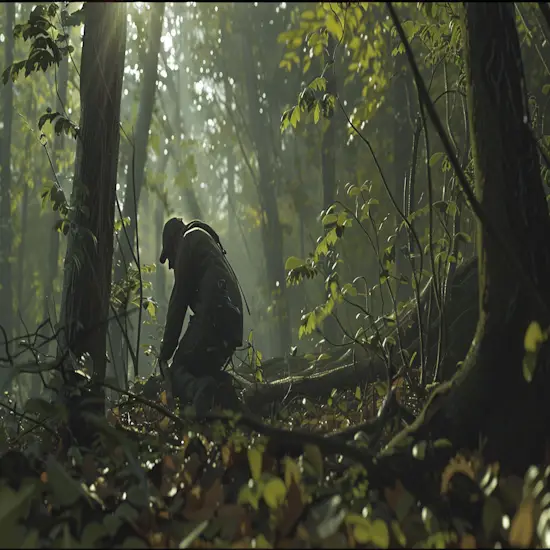
Traditional Tracking Methods
Tracking deer using traditional methods has been the tried and tested way big game hunters have tracked deer for decades. When tracking mature bucks using traditional methods, it is important to pay attention to various details.
Interpreting whitetail deer tracks, understanding the significance of tracks, recognizing mature bucks trails, interpreting deer scat, and identifying deer beds are crucial aspects. These elements provide vital insights into deer behavior, movement patterns, and presence in specific areas.
Deer Track Interpretation
To interpret deer tracks effectively in traditional tracking methods, focus on understanding the travel patterns and behavior of the deer through their distinct hoof imprints. Here are some tips to help you interpret deer tracks:
- Look for the direction of the tracks to understand the deer’s movement.
- Pay attention to the spacing between tracks, indicating the deer’s speed.
- Examine the depth of the tracks to estimate the deer’s weight.
- Note the presence of dew claws, which can provide insight into the deer’s gait.
Significance of Tracks
Understanding the significance of deer tracks in traditional tracking methods is essential for deciphering their movement patterns and behaviors effectively. Deer tracks provide valuable insights into where deer have been, their size, and even their gender.
By paying attention to the volume of tracks rather than just their size, you can better understand deer movement. Fresh tracks near the bedding area or feeding spots are ideal for scouting. Tracking deer through their tracks can lead you to potential hunting locations and help you anticipate their next moves.
Moreover, you can also learn if the deer were moving in haste, walking casually, or is a mature and heavy buck, doe, or fawn. Hence, learning to interpret deer tracks accurately is vital for successful hunting and scouting endeavors.
Understanding Deer Trails
Interpreting deer paths is crucial for identifying their movement patterns and potential hunting locations with precision.
- Deer paths often follow the path of least resistance, such as along ridges or near water sources.
- Look for well-defined paths with tracks close together, indicating frequent use.
- Paths leading to feeding areas are strategic spots for setting up blinds or stands.
- Pay attention to intersecting paths, as these areas are likely to shift points between bedding and feeding areas.
Interpreting Deer Scat
Identifying deer scat is a key skill for hunters to understand deer presence and recent activity in specific areas. Deer scat can provide valuable insights into the timing of deer visits to certain spots.
Fresh scat in bedding or feeding areas can indicate hot hunting locations. When interpreting deer scat, pay attention to its color and texture, as these can offer clues about the deer’s recent movements.
Darker scat may suggest a diet rich in vegetation, while lighter scat could indicate a diet of more tender shoots. By analyzing deer scat, you can gain a better understanding of when and where deer are active, improving your chances of a successful hunt.
Identifying Deer Beds
To locate deer beds in wooded areas, observe flattened patches of grass or leaves where deer have rested.
- Look for areas with trampled vegetation or depressions in the ground.
- Deer beds are often oval or kidney-bean shaped, fitting the deer’s body.
- Fresh beds may have warm spots from the deer’s body heat.
- Deer beds are typically found in secluded spots near feeding areas or along travel routes.
Analyzing Deer Rubs
Analyzing deer rubs involves examining markings left by mature bucks to communicate and assert dominance in their territory. By studying these rubs, you can gain insights into the presence of mature bucks and their hierarchy. Bucks create rubs by rubbing their antlers against trees, leaving behind visual and olfactory cues for other deer.
Fresh rubs indicate recent deer activity in the area. The height of the rub can hint at the size of the buck. Observing the condition of the rub and the tree can help estimate how long ago the marking was made.
Analyzing deer rubs is a key traditional tracking method that can enhance your understanding of deer behavior and improve your hunting success.
Tracking Deer Movement
When tracking deer movement using traditional methods, paying attention to the volume of tracks can provide valuable insights into their travel patterns and preferred areas.
- Focus on the number of tracks to understand deer travel habits.
- Look for fresh tracks near bedding areas for recent activity.
- Note the distribution of tracks to identify popular feeding spots.
- Consider the depth and clarity of tracks for estimating the time of deer presence.
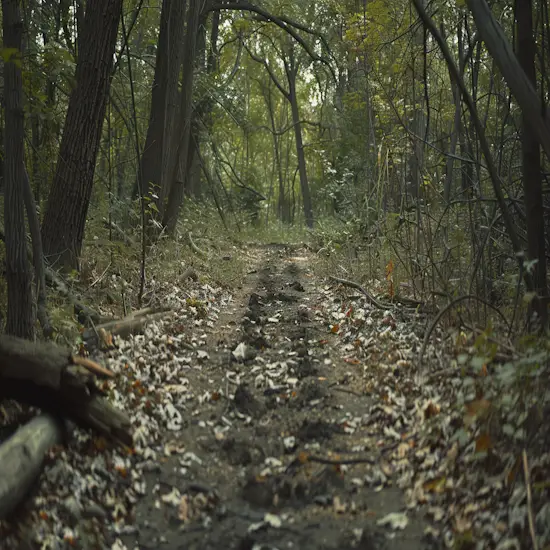
Identifying Deer Presence and Activity
When tracking deer, pay close attention to the freshness of deer scat, as it indicates recent deer activity in specific areas. The location of scat in bedding and feeding areas can guide you to potential hotspots for hunting.
Additionally, analyzing the color and texture of the scat provides valuable insights into the timing of deer presence and activity.
Freshness of Deer Scat
To determine recent deer activity in an area, evaluating the freshness of deer scat can be a valuable indicator of their presence. When scouting for deer, paying attention to the freshness of their scat can give you critical insights into their movements.
Here are some key points to ponder:
- Moisture Content: Fresh scat is moist and soft, indicating recent deer activity.
- Color: Brighter colors like green or brown suggest recent deposits, while darker, dried-out scat is older.
- Odor: Fresher scat tends to have a stronger, more pungent smell compared to older droppings.
- Texture: Soft and pliable scat is likely fresher, while hardened or crumbly scat indicates it has been there longer.
Scat Location Significance
Identifying deer presence and activity through scat location is essential for successful hunting endeavors. Deer scat found in bedding or feeding areas indicates recent deer activity, helping you pinpoint prime hunting spots.
The color and texture of the scat can offer valuable insights into when the deer were present. Fresh scat signifies the likelihood of deer in the vicinity, guiding your scouting efforts.
Color and Texture Analysis
For better hunting success, analyze the color and texture of deer scat to identify their presence and recent activity.
- Freshness Matters: Fresh scat indicates recent deer activity.
- Color Clues: Darker scat suggests recent feeding on greenery, while lighter scat may indicate a diet of twigs and branches.
- Texture Tells: Moist and soft scat imply recent presence, while dried-out pellets could be older.
- Location Insight: Scat found near bedding areas signals deer proximity, while scat in feeding areas may reveal preferred food sources.
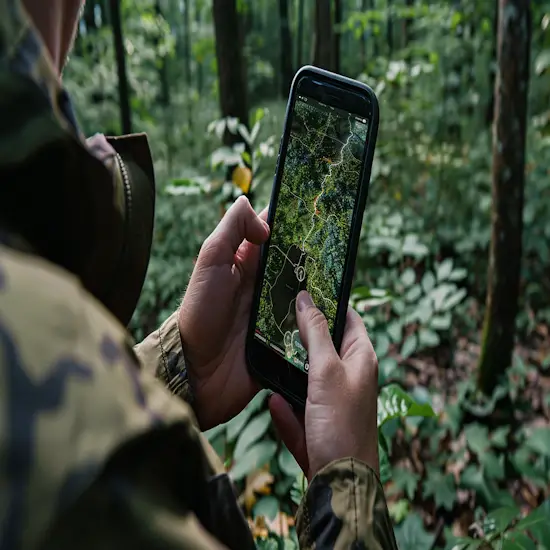
Enhancing Hunting Success With Onx Hunt
Enhance your hunting success by utilizing the onX Hunt app for efficient documentation of deer movement and behavior. With onX Hunt, you can store scouting information effectively for future reference, marking key deer signs like feed trees, scrapes, and rubs.
This app simplifies locating public and private lands, enabling you to devise effective hunting strategies and enhance your hunting efficiency. By utilizing onX Hunt, you can streamline your hunting process and make informed decisions based on documented deer behavior and movement patterns.
Whether you’re a seasoned hunter or just starting out, onX Hunt can be a valuable tool in your arsenal for tracking and scouting deer. Make the most out of your hunting experience by leveraging technology to your advantage and increasing your chances of a successful hunt.

Post-Shot Tracking and Recovery
When tracking a wounded deer post-shot, it’s essential to interpret the blood trail correctly to determine the animal’s condition. Utilizing techniques like marking the last blood on the onX Hunt app can guide you in recovering lost game efficiently.
Understanding the significance of precise tracking methods is crucial for successfully locating and retrieving a wounded deer.
Blood Trail Interpretation
Understanding how to interpret blood trails is crucial for successful post-shot tracking and recovery when hunting deer.
- Color of Blood:
- Bright red indicates a heart or leg shot.
- Dark red suggests a liver shot.
2. Consistency of Blood:
- Thin blood may indicate a muscle hit.
- Clotted blood can signal a hit to major organs.
3. Amount of Blood:
- A steady flow indicates a serious wound.
- Sparse blood may mean a superficial hit.
4. Blood Trail Direction:
- Follow the trail in the direction of the deer’s last seen movement.
- Mark significant blood spots for easier tracking.
Wounded Deer Location
To effectively track and recover a wounded deer after a shot, focus on locating the deer’s last seen movement and marking significant blood spots for easier tracking. Begin by identifying the direction the deer was heading when last seen and track any blood trails diligently.
Look for bright red blood, indicating a heart or leg shot, or dark red blood suggesting a liver shot. Utilize tools like the onX Hunt app to mark the blood spots and predict the deer’s path.
Remember to move quietly and patiently, keeping an eye out for any signs of the wounded deer. By staying focused on the trail and using available resources, you increase your chances of successfully recovering the wounded deer.
Recovering Lost Game
Begin tracking and recovering lost game by focusing on locating the deer’s last seen movement and marking significant blood spots for easier tracking.
- Follow the Blood Trail:
- Start by carefully following the blood trail from the last known location of the deer.
- Look for bright red blood indicating a heart or lung shot, or dark red blood suggesting a liver shot.
2. Use Technology:
- Utilize tracking apps like onX Hunt to mark and track blood spots, aiding in the recovery process.
3. Take Your Time:
- Proceed cautiously, allowing time for the wounded deer to settle, making tracking easier.
4. Stay Focused:
- Maintain focus and patience while tracking, as it may take time to find the deer.
Tracking Techniques Importance
To effectively track and recover lost game after a shot, prioritize the importance of utilizing proper tracking techniques for successful hunting outcomes.
After taking a shot at a deer, it’s essential to wait before starting the tracking process.
Learn to differentiate between blood trails to understand the shot placement; bright red blood indicates a heart or leg shot, while dark red blood suggests a liver shot.
Utilize the onX Hunt app for post-shot activities, marking last blood and other signs to streamline the recovery process and predict the wounded deer’s direction.
Combine your experience in deer country with onX Hunt for scouting and navigation to enhance your hunting success.

Deer Movement Patterns
Deer are most active during dawn and dusk, resting in safe spots during the day and moving towards feeding areas in the evening. Understanding these patterns can help you anticipate their movements and plan your hunting strategies accordingly.
Recognizing these deer activity times, resting spots and feeding habits are essential for a successful hunting experience.
Deer Activity Times
Understanding the activity times of deer can greatly enhance your hunting success.
- Deer are most active at dawn and dusk, known as crepuscular periods.
- They typically rest in safe spots during the day to avoid predators.
- Deer tend to move towards feeding areas in the evening to graze.
- Recognizing these patterns can help you anticipate when and where to find deer for a successful hunt.
Resting Spots
Rest assured, recognizing resting spots is essential for understanding deer movement patterns during your hunting expeditions.
Deer often choose secluded areas like thickets, brushy slopes, or dense vegetation for resting. These spots provide security and cover, allowing deer to relax and avoid predators. Look for signs like flattened grass or leaves, droppings, and hair near these resting areas.
Understanding where deer rest can help you anticipate their movements, especially during the day when they’re less active. Setting up your blinds or stands near these resting spots can increase your chances of spotting deer as they shift between feeding and resting locations.
Feeding Habits
Recognizing deer feeding habits is key to understanding their movements and behavior in the hunting field.
- Deer primarily feeds during the early morning and late afternoon.
- They prefer browsing on leaves, twigs, fruits, and nuts.
- Deer are known to be selective eaters, choosing the most nutritious plants available.
- Monitoring feeding areas can help predict deer movement patterns for successful hunting opportunities.
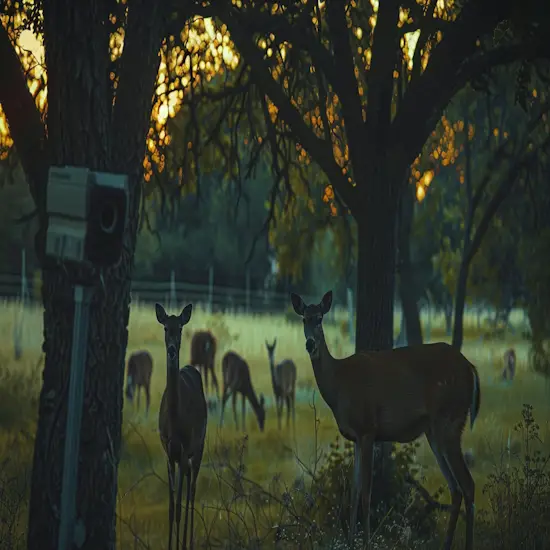
Tracking Deer With Trail Cameras
When tracking deer using trail cameras, it’s essential to place them strategically to capture deer movements effectively.
By monitoring deer behavior through these cameras, you can gather valuable data for analysis, helping you identify patterns and improve your hunting success. Utilizing trail cameras can provide essential insights into deer activity, aiding in your hunting strategies.
Camera Placement for Tracking
For best deer tracking with trail cameras, consider strategic placement in areas frequented by deer for effective monitoring of their movements.
- High Traffic Areas: Position cameras along well-used deer trails or near feeding and watering spots.
- Proper Elevation: Mount cameras at the right height, typically around the waist or chest level, to capture clear images.
- Avoid Direct Sunlight: Place cameras facing north or south to prevent glare and guarantee better quality footage.
- Secure Mounting: Confirm cameras are firmly fastened to trees or posts to prevent them from being knocked over by wildlife.
Monitoring Deer Behavior
To effectively monitor deer behavior using trail cameras, strategically place the cameras in areas frequented by deer for the best observation of their movements. Choose locations near feeding spots, trails, or bedding areas for best results.
Position the cameras at the right height and angle to capture clear footage of the deer. Guarantee the cameras are well-hidden and securely mounted to prevent tampering or theft.
Check the camera settings to ensure proper functionality and battery life. Regularly review the footage to track deer activity patterns, such as feeding times, preferred routes, and group dynamics.
Data Analysis for Patterns
Begin by analyzing the data collected from trail cameras to identify recurring patterns in deer movements.
- Look for specific times of day when deer are most active, indicating peak movement periods.
- Note areas where deer frequently gather, suggesting preferred feeding or resting spots.
- Pay attention to the travel routes deer take through the area, showing travel patterns and potential travel corridors.
- Identify individual deer based on unique markings or characteristics to track their movements accurately.

Tracking Deer in Snow
When tracking deer in snow, it is important to focus on learning snow-tracking techniques to spot their trails easily. Identifying deer trails becomes simpler in snowy conditions due to their distinct impressions.
Keep in mind that behavioral changes in snow may alter deer movement patterns, impacting your tracking strategies.
Snow Tracking Techniques
You can effectively track deer in the snow by following their distinct hoof prints left behind in the snow. Here are some tips to enhance your snow-tracking techniques:
- Look for fresh tracks near feeding areas or trails.
- Follow the direction of the tracks to anticipate the deer’s movement.
- Pay attention to the depth of the prints to estimate the size of the deer.
- Use binoculars to scan the surroundings for more tracks or deer movement.
Identifying Deer Trails
Identifying deer trails in snow involves closely examining the distinct hoof prints left behind by the whitetail deer. Look for the V-shaped two-toed tracks in the snow, indicating a deer trail. These tracks show the direction the deer was moving, helping you follow their path.
Fresh tracks suggest recent deer activity, increasing your chances of spotting them. Pay attention to the depth of the prints; deeper impressions may indicate a larger deer. Follow the trail cautiously, as deer often backtrack or loop in their movements.
Behavioral Changes in Snow
Tracking deer in snow requires keen observation of their behavioral changes and movement patterns to enhance your hunting success. When snow blankets the terrain, deer adapt their behavior, offering valuable insights for hunters:
- Shifts in Feeding Patterns: Deer may alter their feeding areas and times due to snow cover, focusing on easily accessible food sources.
- Movement Speed and Direction: Snow can reveal deer movement speed and direction more clearly, aiding your tracking efforts.
- Bedding Behavior Changes: Deers may seek shelter in different locations or adjust their bedding habits to stay warm.
- Interaction with Other Wildlife: Snow influences deer interactions with other wildlife, potentially altering their movement and behavior patterns.
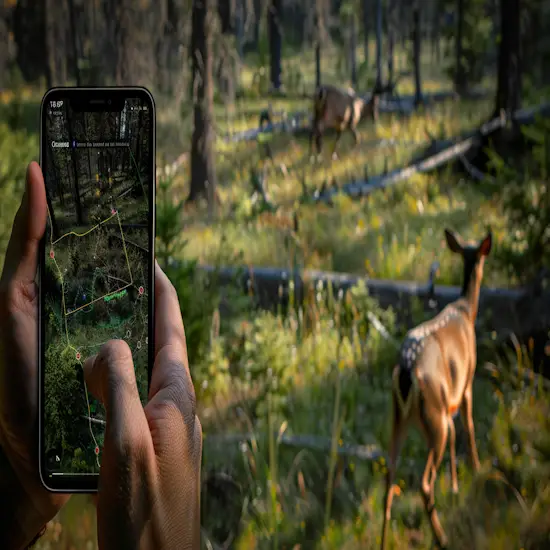
Tracking Deer Behavior With Onx Hunt
You can analyze deer behavior effectively by utilizing OnX Hunt, a top deer hunting app. This tool helps you track deer movements and understand their patterns with precision.
Enhance your hunting success by leveraging the features of OnX Hunt for a more efficient scouting experience.
Deer Behavior Analysis
Understanding deer behavior through tracking with OnX Hunt can greatly enhance your hunting success.
- Recognize Deer Movements:
- Learn when deer are most active for best hunting times.
- Understand where deer rest during the day to plan your approach.
- Identify feeding areas to anticipate deer movement patterns.
- Recognize signs of deer activity to adjust your hunting strategies accordingly.
2. Interpret Deer Communication:
- Learn how mature bucks establish dominance through scrapes.
- Understand does’ behavior of scrapes during the breeding season.
- Recognize the significance of rubs in deer communication.
- Identify deer browse areas for potential feeding spots.
3. Utilize Behavioral Patterns:
- Track deer trails to predict their movement direction.
- Use deer scat to gauge recent deer activity.
- Identify deer bedding areas for potential hunting locations.
- Adjust hunting strategies based on observed deer behavior.
Utilizing OnX Hunt
Utilize the onX Hunt app to enhance your deer tracking and hunting experience effectively. The app offers a free trial and can revolutionize your hunting season.
With onX Hunt, you can track deer movements, behaviors, and patterns efficiently. It aids in documenting valuable scouting intel for future reference, making it easier to understand deer behavior. You can mark potential feed trees, scrapes, rubs, and other deer signs for quick reference.
The app also helps in locating public and private lands, devising effective hunting strategies, and enhancing hunting efficiency.
For post-shot activities like tracking and recovering game, the onX Hunt app is essential. It streamlines the recovery process by predicting the wounded deer’s direction based on marked signs, ensuring a more successful hunting experience.
Tracking Deer Movements
Tracking deer movements can be efficiently facilitated through the onX Hunt app, enhancing your hunting experience.
- Utilize the app’s tracking feature to follow deer movements accurately.
- Document deer behavior and patterns efficiently for future reference.
- Mark potential feeding areas, mock scrapes, rubs, and other sure signs for quick reference.
- Locate public and private lands easily for effective hunting strategies.
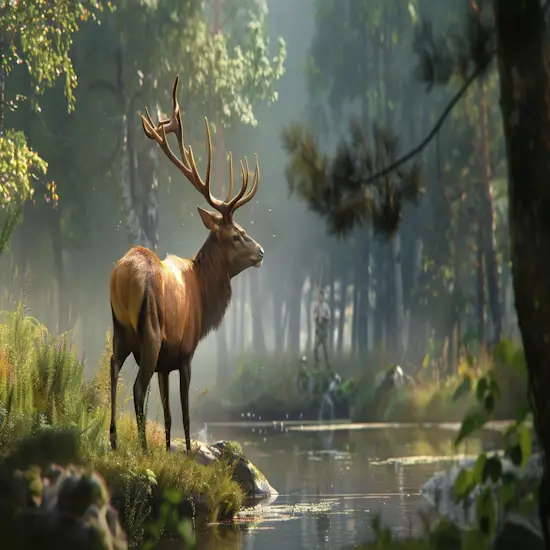
Tracking Peak Deer Activity
When tracking peak deer activity, focus on the key periods of dawn and dusk when deer are most active. During the day, deer typically rest in safe locations before moving towards feeding areas in the evening. Understanding these patterns can greatly enhance your hunting success.
Dawn and Dusk Activity
Observing deer activity at dawn and dusk is crucial for effectively tracking peak deer movement.
- Deer are most active during these times, making them easier to locate.
- Dawn and dusk offer ideal visibility for spotting deer movement.
- Tracking deer during these hours increases hunting success chances.
- Understanding deer behavior during dawn and dusk helps in predicting their next moves.
Resting Spots During Day
During the day, deer often seek out safe and secluded resting spots to rest and avoid predators. These resting spots provide deer with a sense of security, allowing them to relax and conserve energy for their evening activities.
Look for areas with dense vegetation, thick underbrush, or secluded clearings where deer might bed down during the day. Pay attention to signs like flattened grass or leaves, as these could indicate recent deer activity.
Feeding Areas in the Evening
To track peak deer activity in the evening, focus on locating their feeding areas. Here are key tips to help you track deer during this time:
- Scout for Fresh Feeding Signs: Look for areas with fresh browse, acorns, or crops where deer feed.
- Set Up Near Water Sources: Position yourself close to water as deer often visit these areas to drink while feeding.
- Use Trail Cameras: Install trail cameras near feeding spots to monitor deer activity without disturbing them.
- Plan Quiet Approaches: Approach feeding areas quietly and discreetly to avoid spooking deer away.
The Bottom Line
Tracking and scouting are essential skills for a successful hunting career. You will learn deer behavior and movement patterns when you track and scout whitetail deer.
Use trail cams, Google maps, topo maps, and apps like onX Hunt for monitoring. Study deer tracks, droppings, and rubs for signs of their presence. Also, consider wind direction near feeding areas. Be patient and observant for spotting success. For more tips on enhancing your hunting skills and utilizing technology efficiently.
If you want to improve your deer hunting skills, read the best whitetail deer hunting tips. You can also read how to hunt deer on public land.
